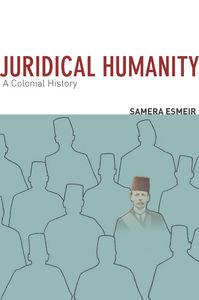Berkeley Books: Juridical Humanity: A Colonial History

During the first two decades of the twentieth century, worms plagued the cotton fields of Egypt, badly damaging British stakes in the industry (which had grown following the decline of American cotton production after the abolition of slavery). Since the cotton worms had to be manually picked off, peasants were central to the agricultural campaign against the infestation. Their labor was increasingly regulated, and the neglect of agricultural duties to combat the worms was liable to be penalized through fines, imprisonment or additional hard fieldwork. The agricultural legalities and scientific reports of the era are writ with irony: concurrent with humane reforms that banned whipping and forced labor, new conventions of law, governance and economy effectively freed peasants into a lifetime of tax, debt and the sale of their labor to private estates where violence still went unchecked outside the regulation of state law.
This strange scene reveals much about the logic of colonial legal operation. Juridical Humanity: A Colonial History by Associate Professor of Rhetoric Samera Esmeir provides a historical and theoretical account of the modern positive law that was implemented to replace shari’a (Islamic) law during the British occupation of Egypt following the conquest of the region in 1882. Modern law, argues Esmeir, set the pursuit of “juridical humanity” as its telos, negotiating and ever so refining the terms of being human. Through the example of Egypt, Esmeir demonstrates that secular notions of humanity weren’t a mere consequence of the new rule of law; rather, modern law, by circumscribing all that is “human” and rejecting anything outside it as dehumanizing, was a necessary operating force in the colonial enterprise. Declared subjects of the rule of law, the Egyptians were accounted for as human by modern law and therefore bound to the colonial state. Esmeir takes off but deviates from Arendt’s articulation of the “juridical person,” a figure who, upon losing his right loses his humanity, and who can be said to commit violence only when excluded from the law. By extension, “juridical humanity” – collapsing the human into the juridical person – involves the colonial state itself as an actor who legally sanctions useful violence, characterizing these as within the realm of the human. Unlike traditional anti-colonialist thinkers, who critique the colonial state for its exclusionary and dehumanizing laws, Esmeir locates coloniality in its positive, inclusive laws that sought to encompass a universal humanity.
Visit the Biblio-file to view books that shaped Professor Esmeir's thinking while working on Juridical Humanity.
Sookyoung Lee is a Graduate Student Researcher at the Townsend Center for the Humanities.